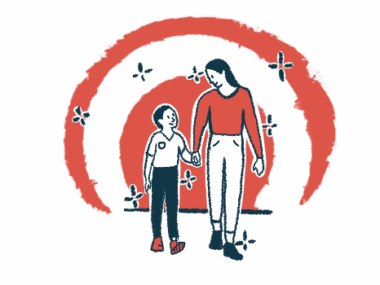Orkambi improves young children’s height, weight: Real-world data
Study also found 50% decline in pulmonary exacerbations with treatment
Written by |

Children with cystic fibrosis (CF) who began taking Orkambi (lumacaftor/ivacaftor) between ages 2 and 5 showed improved height, weight, and body fat content compared with matched patients who hadn’t yet received modulator therapies, a real-world study reports.
There was also a 50% decline in the number of pulmonary exacerbations, that is, sudden worsening of lung symptoms, leading to a hospitalization, among Orkambi-treated patients.
“Data suggest early initiation of [Orkambi] could have a beneficial impact on CF disease progression,” the researchers wrote in “Effectiveness of lumacaftor/ivacaftor initiation in children with cystic fibrosis aged 2 through 5 years on disease progression: Interim results from an ongoing registry-based study,” which was published in the Journal of Cystic Fibrosis.
Orkambi, developed by Vertex Pharmaceuticals, is approved for people as young as 1 who carry both copies of the CFTR gene with a F508del mutation, the most common CF-causing genetic defect. These mutations lead to the impaired production or function of the CFTR protein, resulting in the onset of symptoms.
One of the CFTR modulator medications, Orkambi’s active ingredients enhance the function (ivacaftor) and correct production (lumacaftor) of the defective protein.
Clinical trials showed it improved lung function and body growth while reducing pulmonary exacerbations among patients ages 6 and older who carry two F508del mutations (F/F). In more recent trials in children as young as a year, the therapy reduced sweat chloride and improved pancreatic function and intestinal inflammation.
Early treatment with Orkambi
Here, researchers relay the interim results of a six-year, post-authorization efficacy study, sponsored by Vertex, in CF children who began Orkambi between ages 2 and 5 to better understand the long-term clinical benefits of early treatment in real-world settings. The data was sourced from the European Cystic Fibrosis Society Patient Registry (ECFSPR), a database of more than 54,000 people from 40 countries with CF.
According to the database, 1,014 CF children with F/F mutations, ages 2-5, began taking Orkambi soon after it was authorized for this patient population in January 2019 to the end of the study period in December 2020. For this interim analysis, follow-up ended on Dec. 31, 2021.
To properly assess its efficacy, 681 of the patients were matched and compared to the same number of CF patients with one F508del mutation and a minimal function mutation (F/MF), and hadn’t yet taken Orkambi or any CFTR modulator.
Another comparison group included 183 matched patients with F/F mutations who lived in countries without commercial access to Orkambi as of 2020. The groups were matched by sex, age, and body mass index (BMI), or body fat content.
Before treatment, or at the baseline, BMI percentile values were similar between all three groups. During follow-up, BMI increased in those treated with Orkambi but decreased in both comparison groups. The mean BMI difference from baseline was 8.4 between the Orkambi and F/MF groups and 11.8 between the Orkambi and F/F comparison groups.
At baseline, height percentiles were lower in the Orkambi group than the other two comparison groups. During follow-up, height increased across all groups, but was greater among those on Orkambi.
Likewise, weight percentiles at baseline were lower for Orkambi-treated patients. Still, the mean weight difference from baseline to follow-up was 8.0 between the Orkambi and F/MF groups and 11.8 between the Orkambi and F/F groups. Changes in BMI-for-age, height-for-age, and weight-for-age were consistent with growth development.
During follow-up, the proportion of children with at least one pulmonary exacerbation (PEx) that led to a hospitalization fell in both the Orkambi (50.8%) and the F/MF comparator groups (30.9%). The number of such exacerbations among the F/F comparator patients remained stable.
Across all the groups, the proportion of CF children who were hospitalized fell from the baseline to 2021. In the Orkambi-treated group, there were 50.9% to 60.2% fewer hospitalizations, in the F/MF group, there were 41.1% fewer, and 35.5% fewer in the F/F groups.
No organ transplants were reported, but there was one death in the F/MF group. No apparent trends were seen in the proportion of children using CF medications, the occurrence of CF complications, and lung microbiology in all the groups.
The interim analysis “showed early favorable trends in clinical outcomes, including growth parameters, PEx, and hospitalizations, in children with CF who initiated [Orkambi] treatment between the ages of 2 and 5 years in the ECFSPR,” the researchers said.







